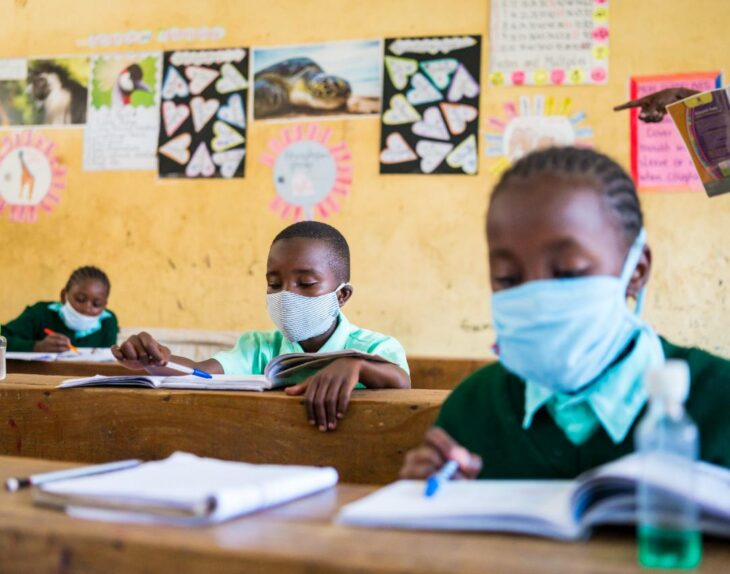NAIROBI, Kenya, Oct 21 – Stakeholders tasked with ensuring the smooth implementation of the Competency-Based Curriculum (CBC) insist that multi-faceted and collaborative efforts will ensure challenges raised during this process are addressed in order to facilitate the transition from the ‘talk and chalk’ pedagogical approach of the 36 year old 8-4-4 education system to the learner-centered and skill-based, 2-6-3-3-3 system of education.
During the Mashujaa Day celebrations, President Uhuru Kenyatta revealed that the government has put several measures in place to ensure that the education sector is ready for the next phase of CBC, where learners will be joining, Junior Secondary School, grade 7.
Infrastructural challenges had been described by stakeholders as the biggest impediment that could possibly affect the rollout process.
“The Ministry of Education, jointly with Ministry of Interior and The National Treasury, shall establish a framework for the construction of the over 10,000 classrooms needed to provide the additional learning space required for the 1 million new students set to join Junior Secondary,” President Kenyatta said.
This is geared towards actualizing the government’s policy of realizing a 100 percent transition from Primary to Secondary school for every Kenyan child.
The National Treasury has been directed to engage Parliament in order to appropriate Sh8 billion towards the construction of classrooms.
Subsequently, as a caveat, the President directed that the construction of classrooms be undertaken by local contractors within the vicinity of each school, so as to provide further stimulus to the local economy.
“The payments for the construction of the said classrooms will be remitted directly to the contractors in their respective sub-counties. This initiative will tap into the skilled manpower within the counties, empowering locals with enhanced economic opportunities,” the President said.
Members of Parliament have been encouraged to ensure that the prioritisation of CDF towards the construction of another 10,000 classrooms.
-CBC Review–
KICD recently embarked on a review process of the CBC, which will be extended from pre-primary 1 to grade three.
According to KICD Chief Executive Prof. Charles Ong’ondo, during an interview with Shahidi News, progressively, further reviews will be conducted based on feedback from stakeholders after the end of the five year implementation cycle next year when learners will have proceeded to grade six.
Recently, even as the Senate committee on education hailed the Competency-based Curriculum terming it as, “the way to go for learners,” it expressed several concerns over gaps that may disadvantage scores of learners across the country.
The committee expressed concerns over the lack of learning materials under the Digital Learning Programme (DLP) due to funding concerns.
Already, at least 21,636 public schools have been equipped with tablets, facilitating learning for the 21st century learner. However 1,191 schools are yet to receive the digital tools of learning.
–CBC Learning Structure–
The 2-6-3-3-3 is tailored around seven core competencies which learners must have in one form or another attained by the end of their learning.
They include communication and collaboration, critical thinking and problem solving, imagination and creativity, citizenship, digital literacy,learning to learn and self-efficacy.
It further recommends that learners should join institutions of learning at the early stages in pre-primary 1 at the age of four before proceeding to Pre-primary 2.
Learners will then proceed to primary school which has been graded and divided into lower and upper primary.
Lower primary will commence at grade 1, 2 and 3 while upper primary will begin in grade 4,5 and 6.
At this point, CBC has been rolled out to grade 5. Learners will join grade 6 next year before joining secondary school.
It is worth noting that before proceeding to secondary school, learners will undertake a summative assessment at grade 6 that will be worth 40 marks.
This will be combined with the initial 20 marks awarded in the formative assessment in grades 4,5 and even 6 totaling to 100 marks.
A criteria for the transition from primary to secondary school is currently being developed.
Secondary School will be divided into junior and senior secondary school.
Junior Secondary School will consist of grade 7,8, and 9 while Senior Secondary School will consist of grade 10,11 and 12 which will be rolled out in 2028 completely phasing out the old education system.
Learners will undertake a national assessment at the end of grade 9 which will determine their placement in senior secondary school, in turn following their preferred career pathways.
Learners will make choices from a range of disciplines organized in three pathways and nine tracks based on their abilities, interests and career choices.
The pathways include: Science,Technology,Engineering and Mathematics(STEM), Social Sciences and Sports Science and Arts sciences. Each pathway has various subjects under it.
To fully master one’s skills/specialize, learners will then finally proceed to tertiary institutions -TVET, Colleges, or Universities-for a couple of years depending on one’s course before joining the job market.
Stakeholders have called for a re-organization of structures and programmes in universities to ensure they adequately cater to learners pursuing STEM courses as well as sports and performing arts, in line with CBC guidelines.
Want to send us a story? Contact Shahidi News Tel: +254115512797 (Mobile & WhatsApp)


